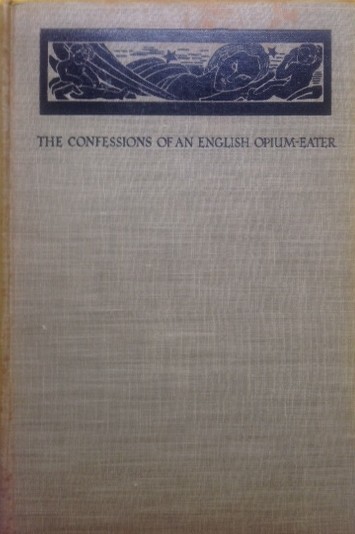Inspiring Older Readers
 posted on 02 Nov 2020
posted on 02 Nov 2020
Confessions of an English Opium Eater by Thomas De Quincey
Long before Huxley’s Doors of Perception, Hunter Thompson’s self-destructive excesses or the birth of psychedelic rock and pop music, there was Thomas De Quincey and his extraordinary, genre-defining description of the perils and pleasures of creative drug dependency, Confessions of an English Opium Eater.
First published in 1821 in magazine form, De Quincey’s work has become one of the defining documents of a certain kind of British Romanticism and its publication was one of the most extraordinary events in a time that specialised in the extraordinary. What’s perhaps most remarkable about the book is the man it came from: not a famous poet or author, not a renowned philosopher and not in any way an extravagantly talented artist. In fact De Quincey was a rather unspectacular character. The excellent literary critic Robert McCrum describes De Quincey as ‘always a drop-out and a drifter’ and in many ways that can also be taken as a description of his intellectual aspirations too. He was dazzled by the likes of Wordsworth and Coleridge and tried his best to emulate the life of the latter as much as he possibly could. Having money meant that he could spend time on developing the identity he had chosen for himself :
“My life has been, on the whole, the life of a philosopher: from my birth, I was made an intellectual creature; and intellectual in the highest sense my pursuits and pleasures have been..”
But it’s probable that posterity would have taken very little notice of De Quincey had it not been for toothache. It was because of the constant pain he developed as result of his bad teeth that sent him off to the chemist for opium to dull the ache. Soon, like Coleridge who he so admired, he was an addict. And boy, what an addict. His consumption of ‘medicinal’ opium in the form of laudanum would make the antics of Keith Richards look modest and understated. But what he did next was the really amazing thing – he wrote about it; uncensored and raw.
The ‘journal’ he produced was in two parts and, in all honesty, it will be the second part that will stay with you. In Part One he maps out his life and tries to show the reader how he and his addiction came to be; how in many ways it was inevitable. This approach is a very modern one I think. Citing the emotional traumas and holes in his psyche and personal development that drew him to the use of an addictive drug is the sort of self-examination we associate more with the 20th than the early 19th century.
But in truth this first half of the book begins to sag and I was wondering whether I would keep going. Just at that key moment we switch into part two and the Confessions take on a whole other dimension. Here De Quincey takes on the task of graphically describing both the highs and lows of his opium addiction and there are some extraordinary passages of writing here that are unmatched in anything else of that same period. In a passage written the best part of 130 years before Huxley’s Doors of Perception, De Quincey produces a description that wouldn’t have been out of place in Huxley’s own journal:
"The sense of space, and in the end, the sense of time, were both powerfully affected. Buildings, landscapes, &c. were exhibited in proportions so vast as the bodily eye is not fitted to conceive. Space swelled, and was amplified to an extent of unutterable infinity. This, however, did not disturb me so much as the vast expansion of time; I sometimes seemed to have lived for 70 or 100 years in one night; nay, sometimes had feelings representative of a millennium passed in that time, or, however, of a duration far beyond the limits of any human experience."
He doesn’t shirk from the terrors the drug can induce and the dissipation it can bring on and, in fact, he drew a lot of flak from critics who felt he’d gone over the top in his detailed, almost sumptuous descriptions. For De Quincey the addiction was a terrible double-edged sword: it gave him an expanded, mystical vision but, at the same time, kept him a captive. As Professor Robert Morrison writes on The Conversation website:
“When he determined to kick his habit, what he called “nervous misery” marked the beginning of withdrawal. If he attempted to battle through it, he was hit hard by vomiting, nausea, irritability and depression. He often fought these miseries, too, but then his resolution faltered, and he went back to opium. His intake levels gradually climbed. He spiralled toward rock bottom. The grim cycle began again.”
It seems to me this book talks more truthfully about drug dependency than much of the priggish, austere ‘just say no’ messages we’ve had to endure over recent times. The failure of anti-drug messages to engage with the inconvenient truth, that for the drug taker there is not only misery but high pleasure to be had, has meant that those who may need to hear both sides of the drug story stop listening.
If you want to get a grown-up discussion about drug addiction going amongst young people who may be tempted down that path, put De Quincey on the exam syllabus and I’m pretty sure it will be something they can connect with.
Terry Potter
November 2020